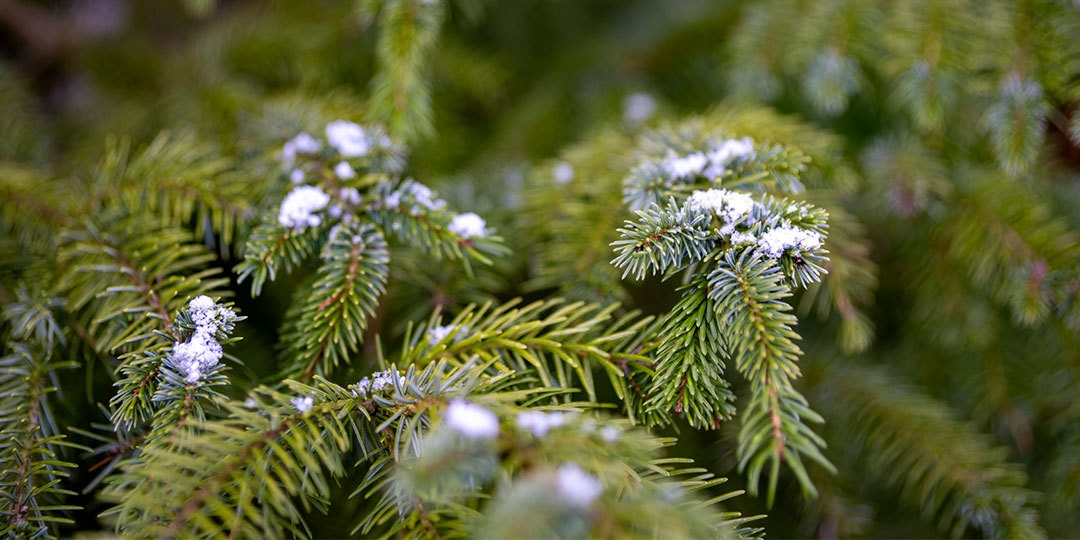Answering Your Questions About Trees in Winter
Whether you live somewhere that gets snowy and cold in the winter or your climate gets chilly and dry at the end of the year, trees are affected by the change in seasons. Learning more about how your tree functions in every season helps you give it the best possible care. (Or you can call someone who is already trained to know all the ins and outs). Learn more about what happens to your arboreal friends when the temperatures dip.
What Do Trees Do in the Winter?
As temperatures start to drop, deciduous/leafy trees (and even a few conifers/needle-bearing trees) shed their leaves in preparation for going dormant. Even in warm climates, most leafy trees will lose their leaves in fall or winter, though it usually happens later in the season than in colder climates farther north.
Trees “slow down” during winter. Trees that lose their leaves or needles stop photosynthesizing (getting energy from the sun) entirely. They halt above-ground growth until temperatures warm up and they can begin getting nutrients from sunlight again. Evergreens also use winter as a break, slowing down their metabolic functions, even if they don’t shut down completely. This slowdown makes winter a prime time for tree and shrub pruning in warmer climates, though places with hardy winters may need to wait for spring. Winter pruning is a science, and we recommend advice from a professional arborist.
Do Trees Get Cold?
For the most part, trees don’t get particularly chilly during the wintertime. Trees begin increasing their cold tolerance in late summer, reaching the level they need by the time winter rolls around. Dormancy protects them from the effects of dropping temperatures, with two main exceptions:
- Non-native trees: Sometimes, people plant trees where they won't thrive. Planting a delicate ornamental or fruit tree too far north will usually lead to it struggling or dying once things start to freeze over. Monster Tree Service can tell you which trees are native to your area before you plant.
- Unusually cold temperatures for your area: As the climate changes, regional temperatures are prone to fluctuating. That means everything from oranges freezing in Florida to trees exploding in extreme cold.
Related Content: Winter Frost Damage to Plants
Can You Plant Trees in the Winter?
If the soil is frozen, it's a hard no on planting, not the least because you won't be able to dig into the ground to place a sapling! Regions with predictably cold winters should stick to planting trees in the fall whenever possible.
Warmer climates that don't often experience a hard freeze have more wiggle room. Most saplings need about six weeks of warm soil without a hard freeze to take root and thrive, though more delicate species may need more time. Winter is an ideal time to plant trees in extra-hot climates, like zones 8-9 of the US. These zones include the southern half of Texas, much of California, Florida, Louisiana, and other southern states.
Do Tree Roots Grow in the Winter?
If the soil doesn’t freeze, many trees may continue to grow their roots in winter. Trees that lose their leaves halt above-ground growth. However, they may spend some of their energy on root growth if soil temperatures rise above 32-41°F. Evergreens may also continue to grow their roots as long as the soil stays warm enough.
Do Tree Roots Grow More Quickly in the Winter?
No, tree roots grow slower in winter. Early and late spring are the most active growth times for most tree species, including their roots.
Get Professional Care for Your Trees in Winter and All Year Long
While trees can mostly be left alone to do their own thing during winter, you should address signs of damage, leaning, or disease as soon as possible. Working with a professional arborist to receive plant health care services helps keep your trees healthy year-round. Call your local Monster Tree Service for professional assistance or request an estimate to get started.

